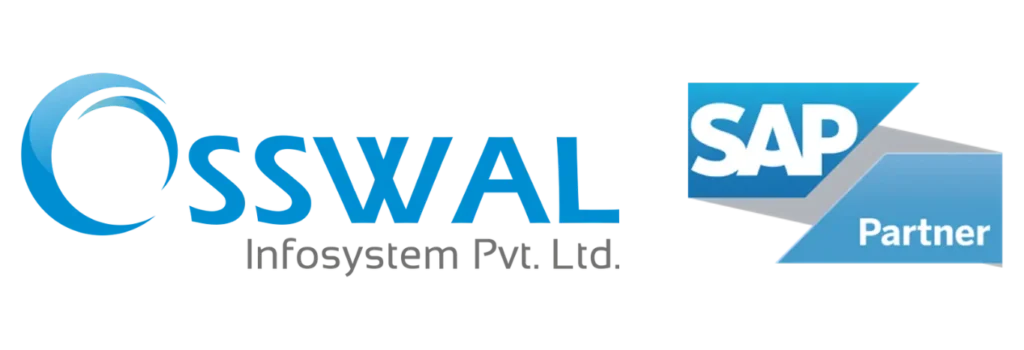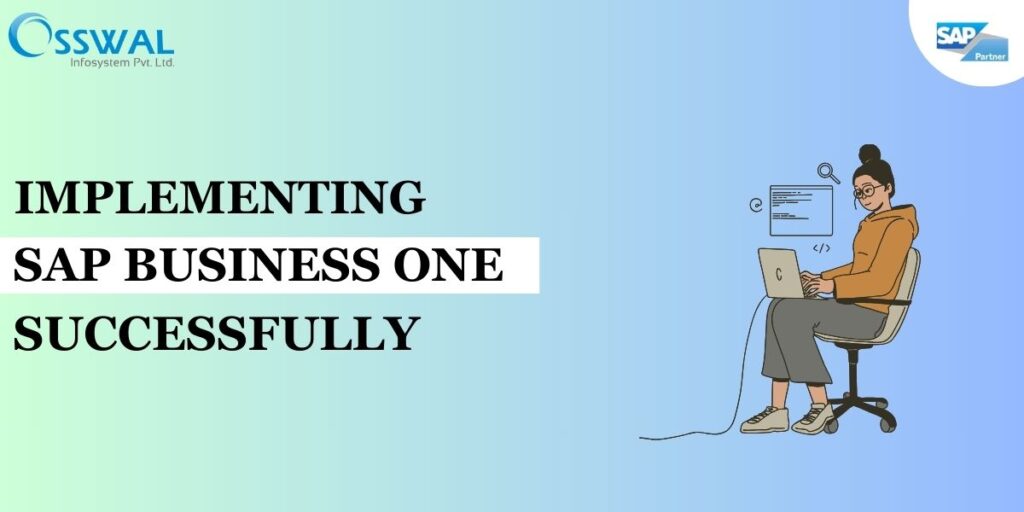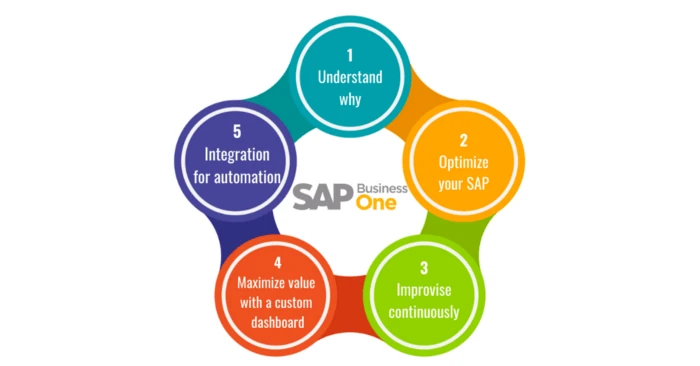In today’s fast-paced business environment, small and medium-sized enterprises (SMEs) are increasingly turning to SAP Business One to streamline their operations and drive growth. This powerful enterprise resource planning (ERP) solution offers a wide range of functionalities to manage finances, sales, customer relationships, and more. However, the successful implementation of SAP Business One requires careful planning and execution. In this blog post, we’ll explore key strategies to ensure a smooth and successful implementation.
Define Clear Objectives: Before diving into the implementation process, it’s crucial to define your business objectives and expectations from SAP Business One. Identify the specific problems you want to solve and the goals you want to achieve. This clarity will guide the entire implementation process and help you measure its success.
SAP Business One, integrated seamlessly with the Osswal Infosystem, empowers businesses with unparalleled efficiency and insight. This dynamic synergy optimizes operations by providing real-time data access, enhanced financial management, and streamlined processes. With SAP Business One’s robust capabilities and the Osswal Infosystem expertise in open-source solutions, organizations can achieve a new level of agility and productivity, making informed decisions and staying ahead in today’s competitive landscape. Harness the power of this integration to drive growth and stay at the forefront of innovation.
Engage Stakeholders:
Successful SAP Business One implementation is a team effort. Engage key stakeholders from various departments within your organization, including finance, sales, and IT. Their input and buy-in are essential to align the solution with your business needs.
Select the Right Implementation Partner:
Choosing the right implementation partner is perhaps the most critical decision in this process. Look for partners with a proven track record in SAP Business One implementation and a deep understanding of your industry. They should be able to customize the solution to fit your unique requirements.
Thorough Planning:
A well-thought-out implementation plan is the foundation of success. It should include a timeline, budget, resource allocation, and risk assessment. A phased approach can help manage complexity and reduce the disruption to your daily operations.
Data Migration and Cleansing:
Data is the lifeblood of your business. Ensure that your data is clean, accurate, and up-to-date before migrating it to SAP Business One. Data cleansing and validation are crucial steps to prevent issues down the road.
User Training:
Don’t underestimate the importance of user training. Invest in comprehensive training programs for your staff to ensure they can fully utilize the system’s capabilities. Well-trained users are more likely to embrace the new system and maximize its benefits.
Testing and Quality Assurance:
Rigorous testing and quality assurance are essential to identify and resolve any issues before the system goes live. Test various scenarios to ensure the system behaves as expected and meets your business requirements.
Change Management:
Implementing SAP Business One often brings significant changes to your business processes. Effective change management is vital to help your employees adapt to these changes smoothly. Communicate the benefits of the new system and provide support during the transition.
Continuous Improvement:
After the system is live, it’s important to continually assess its performance and gather feedback from users. Regular updates and improvements will help you maximize the long-term value of SAP Business One.
Post-Implementation Support:
Your relationship with your implementation partner shouldn’t end when the system is live. Ensure you have a support plan in place for ongoing maintenance, troubleshooting, and updates.
In conclusion, implementing SAP Business One successfully requires a strategic approach that involves careful planning, stakeholder engagement, and a commitment to ongoing improvement. By following these key strategies, SMEs can harness the power of SAP Business One to drive efficiency, improve decision-making, and achieve sustainable growth. Remember that the journey doesn’t end with implementation; it’s just the beginning of a more streamlined and competitive future for your business.



